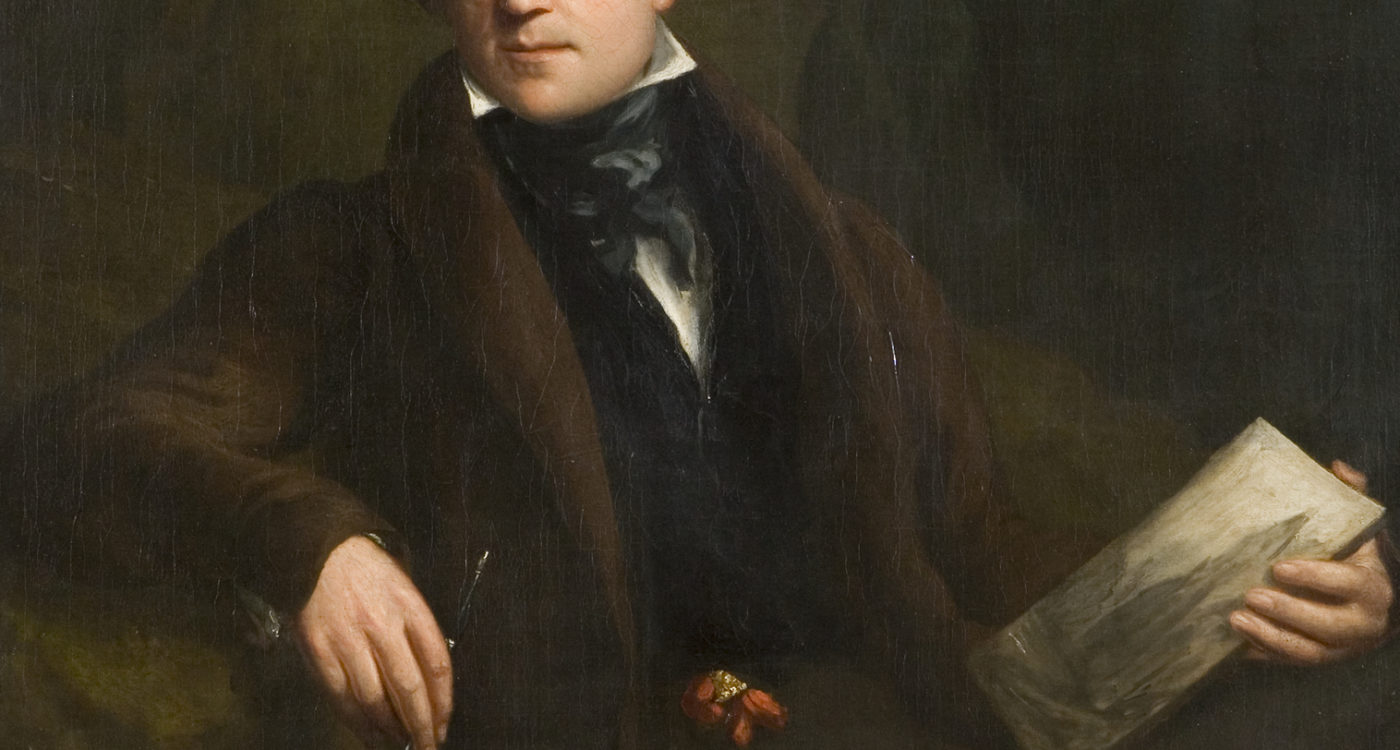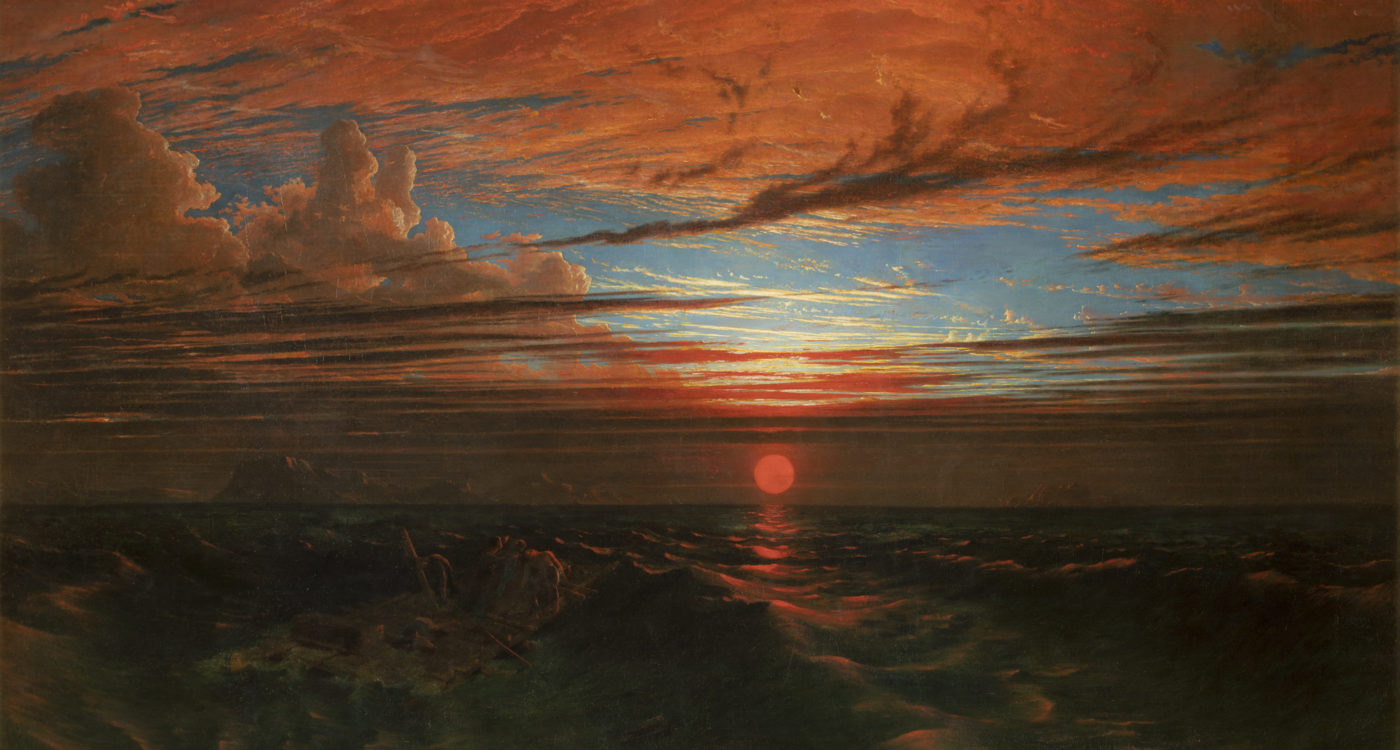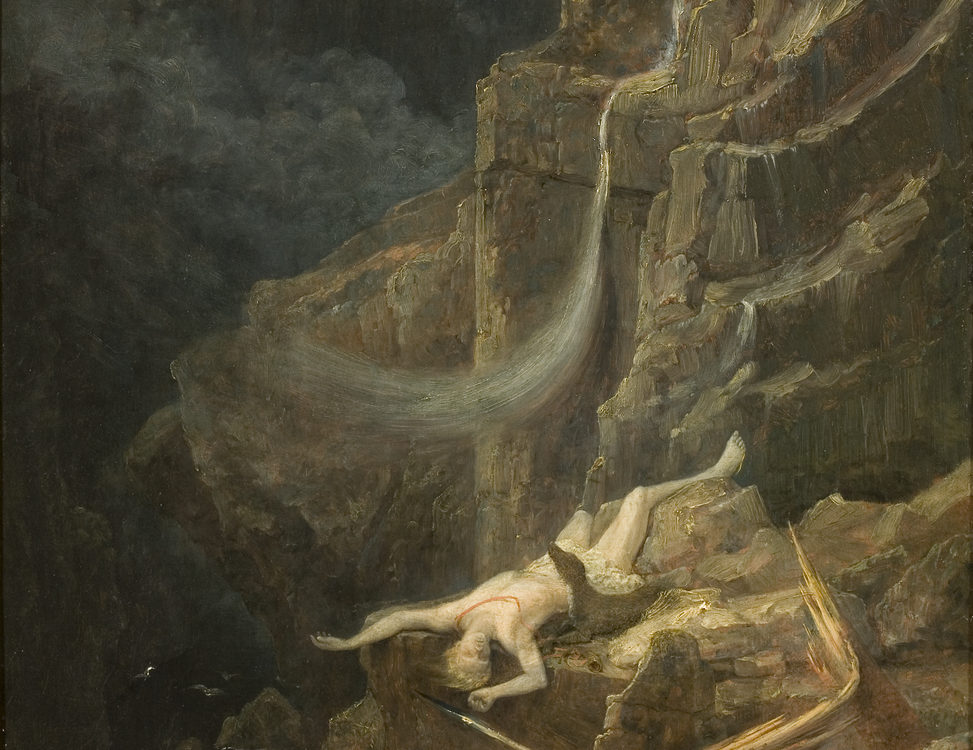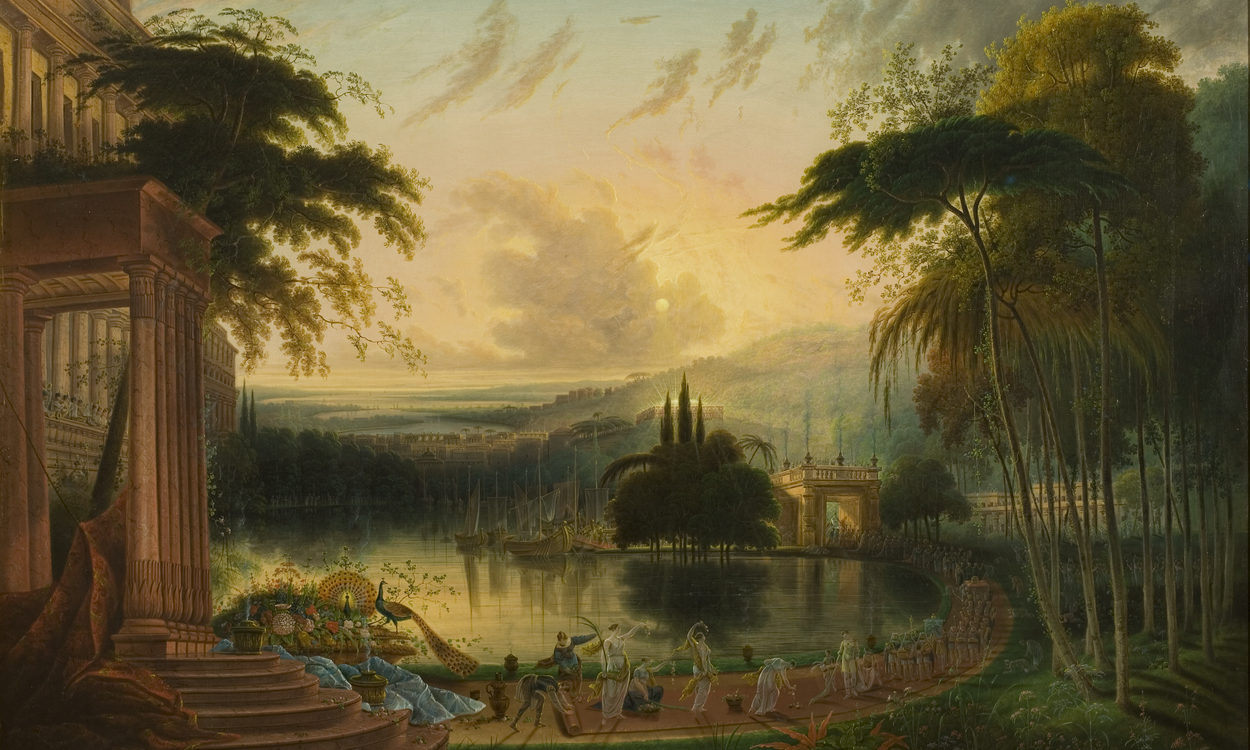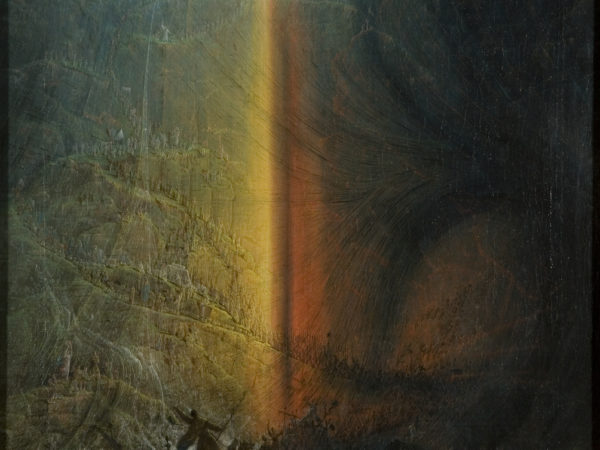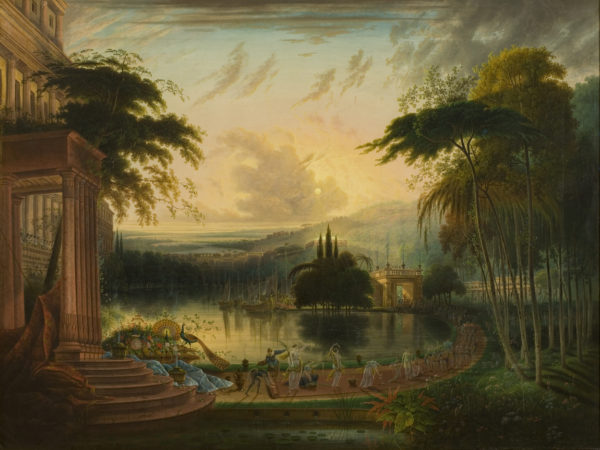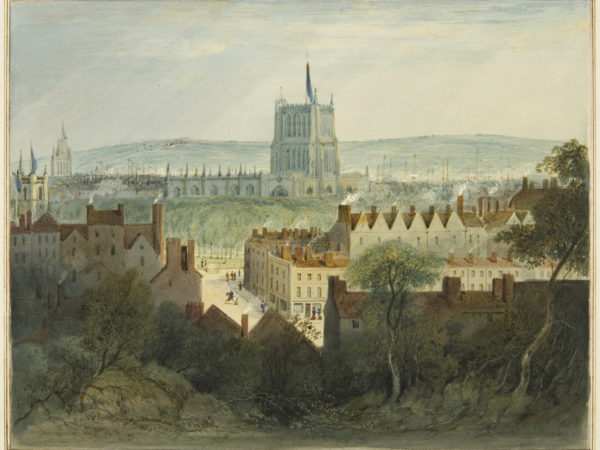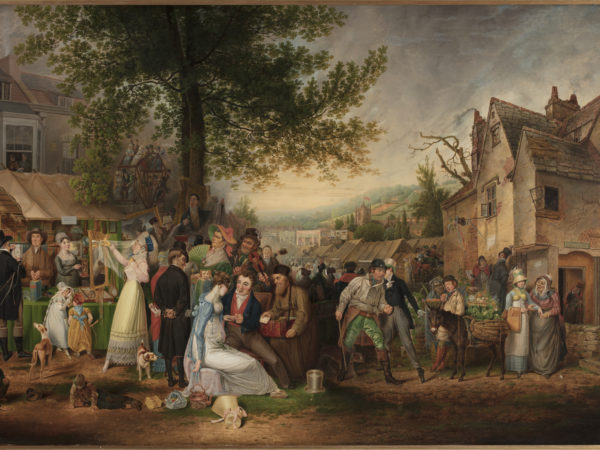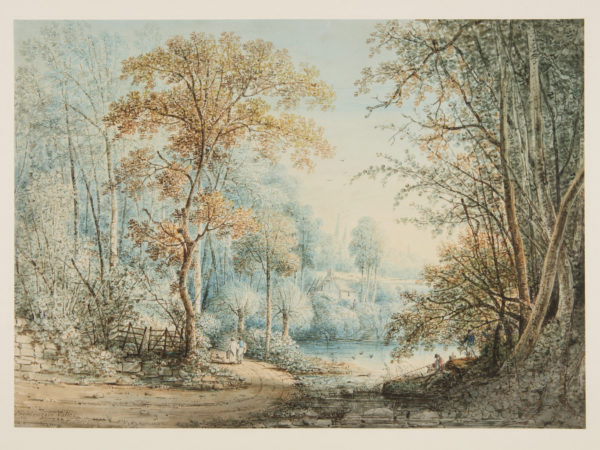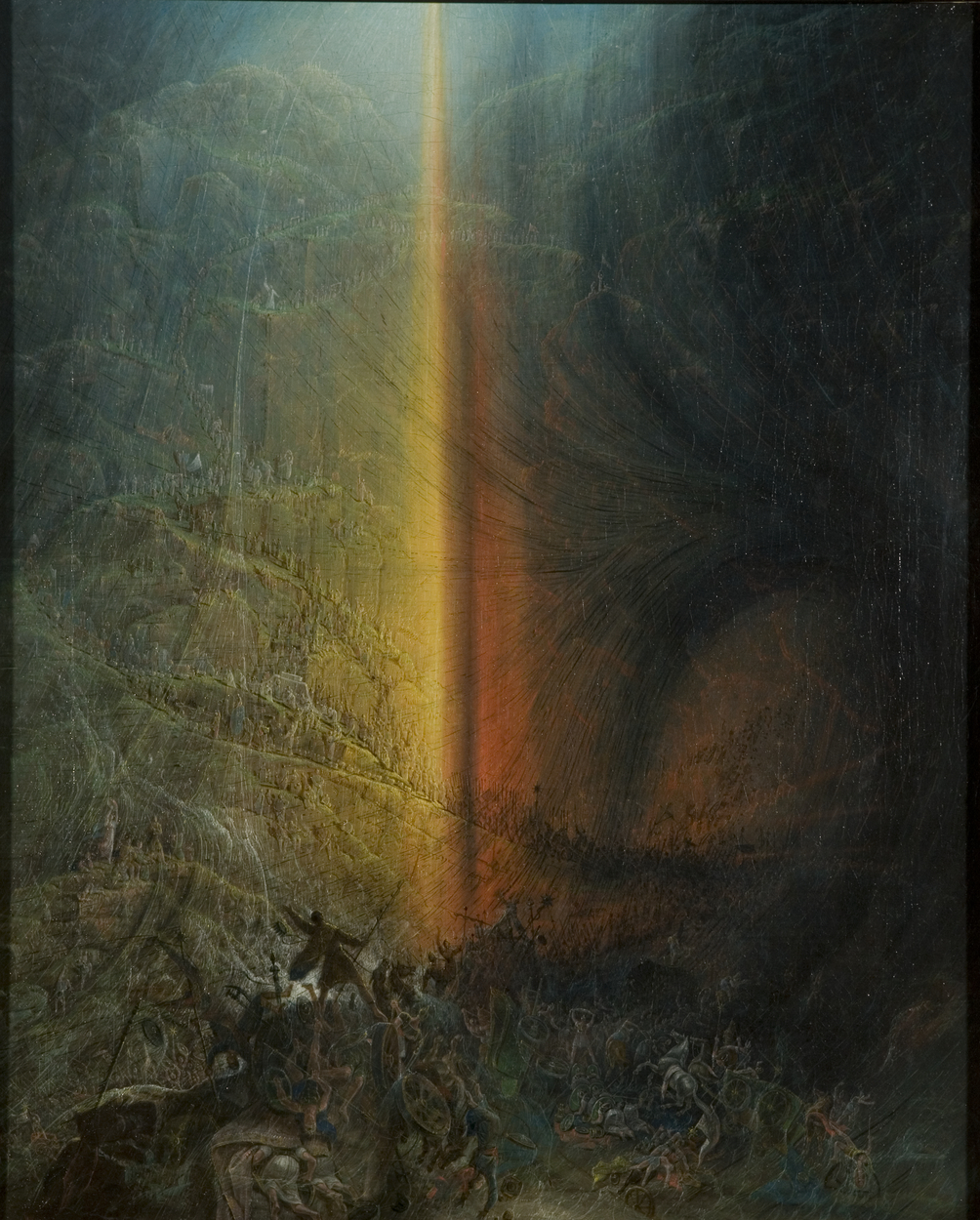
Absolutely Sublime: Danby, Colman and the imaginary landscape
In the early 1820s, Francis Danby began a series of imaginary landscapes, with some success. The aesthetic of the “sublime”, which sought “delightful horror”, had developed in Britain during the 1700s.
Artists like Turner and John Martin began exploiting in the landscape genre. Inspired by their success, Danby exhibited a number of striking catastrophe paintings in London.
These include Sunset at Sea after a Storm and The Opening of the Sixth Seal, which brought him considerable fame. Danby’s pictures had a major influence on the Bristol art scene, particularly on William West.
The painter Samuel Colman was the most original representative of this fantasy genre.
He was profoundly influenced by his Nonconformist faith and expressed it in paintings like Saint James’s Fair and The Destruction of Pharaoh’s Host.
